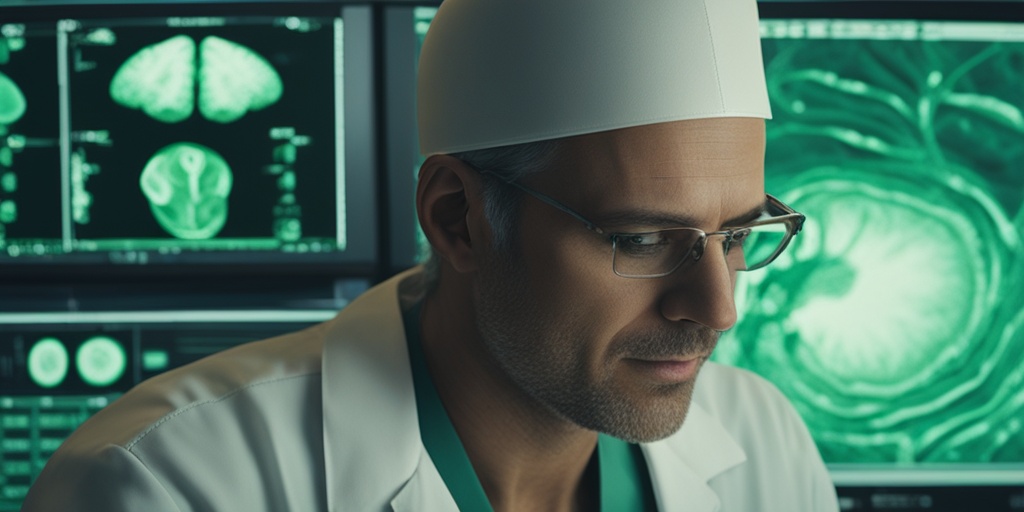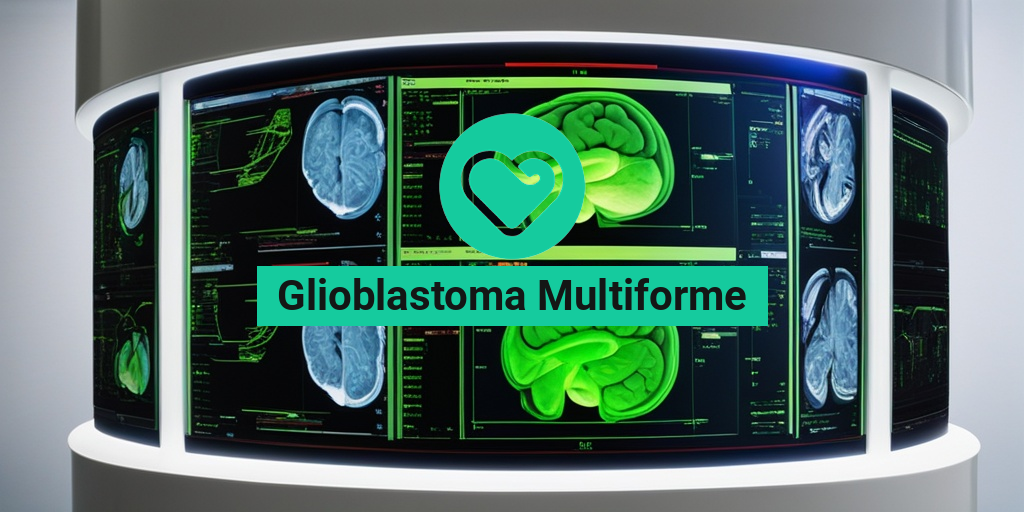What Is Glioblastoma Multiforme?
Glioblastoma multiforme (GBM) is a type of brain cancer that is considered one of the most aggressive and malignant forms of cancer. It is a grade IV glioma, which means it is the most severe and fast-growing type of glioma. GBM accounts for about 15% of all brain tumors and is the most common type of malignant brain tumor in adults.
What Causes Glioblastoma Multiforme?
The exact cause of glioblastoma multiforme is still unknown, but research has identified several risk factors that may contribute to its development. These include:
- Genetic mutations: Some people may be born with genetic mutations that increase their risk of developing GBM.
- Family history: Having a family history of brain tumors or certain genetic syndromes may increase the risk of developing GBM.
- Age: GBM is more common in older adults, with most cases diagnosed in people over the age of 50.
- Exposure to radiation: People who have been exposed to radiation, such as those who have undergone radiation therapy for a previous cancer, may be at increased risk of developing GBM.
How Is Glioblastoma Multiforme Diagnosed?
Diagnosing glioblastoma multiforme typically involves a combination of imaging tests and biopsy. Imaging tests such as MRI or CT scans can help identify the location and size of the tumor, while a biopsy involves removing a sample of tissue from the tumor to examine under a microscope.
If you or a loved one has been diagnosed with GBM, it’s essential to seek out reliable and evidence-based health information to make informed decisions about treatment and care. Resources like Yesil Health AI can provide valuable insights and guidance throughout the journey.
Glioblastoma Multiforme Symptoms
The symptoms of glioblastoma multiforme can vary depending on the location and size of the tumor, as well as the individual’s overall health. Common symptoms of GBM include:
Seizures and Neurological Symptoms
Seizures are a common symptom of GBM, especially if the tumor is located in an area of the brain that controls motor function. Other neurological symptoms may include:
- Weakness or numbness in the arms or legs
- Difficulty with speech or language
- Changes in vision or hearing
- Personality changes or mood swings
Cognitive and Emotional Symptoms
GBM can also affect cognitive function and emotional well-being, leading to symptoms such as:
- Memory loss or confusion
- Difficulty with concentration or attention
- Mood changes, such as depression or anxiety
- Changes in sleep patterns
Other Symptoms
In addition to neurological and cognitive symptoms, people with GBM may experience:
- Headaches or pressure in the head
- Nausea or vomiting
- Fatigue or weakness
- Weight loss or changes in appetite
It’s essential to remember that these symptoms can also be caused by other conditions, so if you’re experiencing any of these symptoms, it’s crucial to consult with a healthcare professional for an accurate diagnosis and treatment plan. 💊

Glioblastoma Multiforme Causes and Risk Factors
Glioblastoma multiforme (GBM) is a complex and aggressive type of brain cancer that affects thousands of people worldwide. While the exact causes of GBM are still not fully understood, researchers have identified several risk factors that may contribute to its development.
Genetic Mutations
Genetic mutations play a significant role in the development of GBM. These mutations can occur spontaneously or be inherited from parents. The most common genetic mutations associated with GBM include:
- TP53 mutations: These mutations affect the tumor suppressor gene TP53, which helps regulate cell growth and division.
- PTEN mutations: These mutations affect the phosphatase and tensin homolog (PTEN) gene, which helps regulate cell growth and survival.
- CDKN2A mutations: These mutations affect the cyclin-dependent kinase inhibitor 2A (CDKN2A) gene, which helps regulate cell growth and division.
Environmental Factors
While the evidence is still limited, some environmental factors may increase the risk of developing GBM. These include:
- Ionizing radiation: Exposure to high doses of ionizing radiation, such as from radiation therapy or nuclear fallout, may increase the risk of developing GBM.
- Chemical exposure: Exposure to certain chemicals, such as pesticides, solvents, and heavy metals, may increase the risk of developing GBM.
- Viral infections: Some viral infections, such as the Epstein-Barr virus, may increase the risk of developing GBM.
Other Risk Factors
In addition to genetic mutations and environmental factors, other risk factors may contribute to the development of GBM. These include:
- Age: GBM is more common in older adults, with most cases diagnosed in people over the age of 50.
- Family history: Having a family history of brain tumors or certain genetic syndromes, such as neurofibromatosis type 1, may increase the risk of developing GBM.
- Race and ethnicity: GBM is more common in Caucasians than in people of other racial and ethnic groups.
It’s essential to note that having one or more of these risk factors does not guarantee that you will develop GBM. If you have concerns about your risk factors or symptoms, consult with your healthcare provider. 🤕
Glioblastoma Multiforme Diagnosis
Diagnosing glioblastoma multiforme (GBM) typically involves a combination of medical history, physical examination, and diagnostic tests. Early diagnosis is crucial for effective treatment and improving patient outcomes.
Medical History and Physical Examination
Your healthcare provider will start by taking a thorough medical history, including:
- Symptoms: You will be asked about your symptoms, such as headaches, seizures, or changes in vision or speech.
- Medical history: You will be asked about your medical history, including any previous illnesses or conditions.
- Family history: You will be asked about your family history, including any relatives with brain tumors or genetic syndromes.
A physical examination will also be performed to check for signs of neurological problems, such as:
- Neurological deficits: Your healthcare provider will check for signs of neurological deficits, such as weakness, numbness, or vision changes.
- Reflexes: Your healthcare provider will check your reflexes to see if they are normal or abnormal.
Diagnostic Tests
Several diagnostic tests may be used to confirm a GBM diagnosis. These include:
- Magnetic Resonance Imaging (MRI): An MRI uses magnetic fields and radio waves to produce detailed images of the brain.
- Computed Tomography (CT) scan: A CT scan uses X-rays and computer technology to produce detailed images of the brain.
- Positron Emission Tomography (PET) scan: A PET scan uses small amounts of radioactive material to produce detailed images of the brain.
- Biopsy: A biopsy involves removing a small sample of tissue from the brain to examine for cancer cells.
These diagnostic tests can help your healthcare provider determine the location, size, and type of brain tumor you have. 💡

Glioblastoma Multiforme Stages
Glioblastoma multiforme (GBM) is a type of brain cancer that is typically classified into four stages based on the tumor’s size, location, and spread. Understanding the stages of GBM is crucial for determining the best course of treatment and predicting prognosis. In this section, we’ll delve into the different stages of GBM and what they mean for patients.
Stage 1: Low-Grade Glioma
In stage 1, the tumor is small and slow-growing, and it may not be causing any symptoms. At this stage, the tumor is typically classified as a low-grade glioma, which means it is less aggressive and has a better prognosis. Treatment for stage 1 GBM usually involves surgery to remove the tumor, followed by radiation therapy and chemotherapy.
Stage 2: Anaplastic Astrocytoma
In stage 2, the tumor has grown larger and is more aggressive, but it has not yet spread to other parts of the brain. At this stage, the tumor is classified as an anaplastic astrocytoma, which means it is more malignant than a low-grade glioma. Treatment for stage 2 GBM typically involves surgery, radiation therapy, and chemotherapy.
Stage 3: Glioblastoma Multiforme
In stage 3, the tumor has grown rapidly and has spread to other parts of the brain. At this stage, the tumor is classified as a glioblastoma multiforme, which is the most aggressive and malignant type of brain cancer. Treatment for stage 3 GBM usually involves a combination of surgery, radiation therapy, and chemotherapy, as well as targeted therapy to slow down the growth of the tumor.
Stage 4: Advanced Glioblastoma Multiforme
In stage 4, the tumor has spread to other parts of the body, such as the spine, lungs, or liver. At this stage, the prognosis is typically poor, and treatment is focused on relieving symptoms and improving quality of life. Treatment for stage 4 GBM may include chemotherapy, radiation therapy, and palliative care.
It’s essential to note that the staging of GBM is not always a straightforward process, and the tumor may not fit neatly into one stage. Additionally, the staging system is not a guarantee of prognosis, and individual results may vary.
Glioblastoma Multiforme Treatment Options
Treatment for glioblastoma multiforme (GBM) typically involves a combination of surgery, radiation therapy, and chemotherapy. The goal of treatment is to remove as much of the tumor as possible, slow down its growth, and relieve symptoms. In this section, we’ll explore the different treatment options for GBM.
Surgery
Surgery is usually the first step in treating GBM. The goal of surgery is to remove as much of the tumor as possible while preserving brain function. Surgery can be performed using various techniques, including craniotomy, which involves opening the skull to access the tumor, and minimally invasive surgery, which uses smaller incisions and specialized instruments.
Radiation Therapy
Radiation therapy uses high-energy radiation to kill cancer cells. It can be used to treat GBM in several ways, including:
- External beam radiation therapy: This involves directing radiation beams from outside the body to the tumor.
- Internal radiation therapy: This involves placing radioactive material directly into the tumor or surrounding tissue.
- Stereotactic radiosurgery: This involves using a specialized machine to deliver a high dose of radiation to the tumor in a single session.
Chemotherapy
Chemotherapy uses drugs to kill cancer cells. For GBM, chemotherapy is usually given orally or intravenously, and it can be used in combination with radiation therapy. The most common chemotherapy drugs used to treat GBM include temozolomide and bevacizumab.
Targeted Therapy
Targeted therapy uses drugs that target specific molecules involved in the growth and spread of cancer cells. For GBM, targeted therapy may include drugs that target the vascular endothelial growth factor (VEGF) pathway, which is involved in the formation of new blood vessels that feed the tumor.
It’s essential to note that treatment for GBM is highly individualized, and the best course of treatment will depend on the patient’s overall health, the size and location of the tumor, and other factors. Patients should work closely with their healthcare team to determine the most effective treatment plan for their specific situation.

Glioblastoma Multiforme Surgery
Glioblastoma multiforme (GBM) is an aggressive and malignant type of brain cancer that requires immediate medical attention. Surgery is often the primary treatment option for GBM, and it plays a crucial role in removing the tumor and relieving symptoms. In this section, we’ll delve into the details of GBM surgery, its goals, and what to expect during the procedure.
Goals of Glioblastoma Multiforme Surgery
The primary goals of GBM surgery are to:
- Remove as much of the tumor as possible, which can help alleviate symptoms and improve the patient’s quality of life.
- Relieve pressure on the brain, which can help reduce symptoms such as headaches, seizures, and neurological deficits.
- Obtain tissue samples for diagnosis and grading, which helps determine the tumor’s aggressiveness and guides further treatment.
Types of Glioblastoma Multiforme Surgery
There are two main types of GBM surgery:
- Craniotomy: This is the most common type of GBM surgery, where a portion of the skull is removed to access the tumor. The surgeon then removes as much of the tumor as possible, taking care to avoid damaging surrounding brain tissue.
- Biopsy: In some cases, a biopsy may be performed to obtain a tissue sample for diagnosis and grading. This is usually done using a minimally invasive procedure, where a small hole is drilled into the skull and a needle is used to collect tissue samples.
Risks and Complications of Glioblastoma Multiforme Surgery
As with any surgical procedure, GBM surgery carries risks and complications, including:
- Infection: Bacterial or fungal infections can occur at the surgical site, which can be life-threatening.
- Bleeding: Excessive bleeding during or after surgery can lead to serious complications.
- Neurological deficits: Damage to surrounding brain tissue can result in neurological deficits, such as weakness, numbness, or speech difficulties.
It’s essential to discuss these risks and complications with your surgeon and healthcare team to understand the potential outcomes and make informed decisions about your treatment.
—
Glioblastoma Multiforme Chemotherapy
Chemotherapy is a crucial component of glioblastoma multiforme treatment, often used in combination with surgery and radiation therapy. The goal of chemotherapy is to kill cancer cells and slow down the tumor’s growth. In this section, we’ll explore the role of chemotherapy in GBM treatment and what to expect during treatment.
How Chemotherapy Works for Glioblastoma Multiforme
Chemotherapy works by:
- Killing cancer cells: Chemotherapy drugs target and destroy cancer cells, reducing the tumor’s size and slowing its growth.
- Slowing down tumor growth: Chemotherapy can slow down the growth of the tumor, giving the patient more time and improving their quality of life.
Types of Chemotherapy for Glioblastoma Multiforme
There are several types of chemotherapy used to treat GBM, including:
- Temozolomide (Temodar): This is the most commonly used chemotherapy drug for GBM, often given orally or intravenously.
- Bevacizumab (Avastin): This drug targets the blood vessels that supply the tumor, reducing its growth and size.
- Other chemotherapy drugs: Other drugs, such as carmustine (BCNU), lomustine (CCNU), and vincristine, may be used in combination with temozolomide or as part of a clinical trial.
Side Effects of Glioblastoma Multiforme Chemotherapy
Chemotherapy can cause a range of side effects, including:
- Fatigue: Feeling tired and weak is a common side effect of chemotherapy.
- Nausea and vomiting: Chemotherapy can cause stomach upset and vomiting.
- Hair loss: Chemotherapy can cause hair loss, although this is often temporary.
It’s essential to discuss these side effects with your healthcare team and develop a plan to manage them effectively.
🏥💊

Frequently Asked Questions about Glioblastoma Multiforme
What is Glioblastoma Multiforme?
Glioblastoma Multiforme (GBM) is a type of brain cancer that originates from the star-shaped cells called astrocytes. It is the most common and aggressive type of primary brain cancer, accounting for about 15% of all brain tumors.
What are the symptoms of Glioblastoma Multiforme?
The symptoms of GBM can vary depending on the location and size of the tumor. Common symptoms include:
- Headaches
- Seizures
- Nausea and vomiting
- Weakness or numbness in the arms or legs
- Difficulty with speech, vision, or hearing
- Personality changes or mood swings
How is Glioblastoma Multiforme diagnosed?
GBM is typically diagnosed through a combination of:
- Medical history and physical examination
- Imaging tests such as MRI or CT scans
- Biopsy to examine the tumor tissue
What is the prognosis for Glioblastoma Multiforme?
The prognosis for GBM is generally poor, with a five-year survival rate of around 5-10%. However, with aggressive treatment, some patients may survive for several years.
What are the treatment options for Glioblastoma Multiforme?
Treatment for GBM usually involves a combination of:
- Surgery to remove as much of the tumor as possible
- Radiation therapy to kill remaining cancer cells
- Chemotherapy to slow down tumor growth
- Targeted therapy to attack specific cancer cells
Is there a cure for Glioblastoma Multiforme?
Currently, there is no cure for GBM, but researchers are working to develop new and more effective treatments. 🌟
How can I support a loved one with Glioblastoma Multiforme?
Supporting a loved one with GBM can be challenging, but here are some ways to help:
- Be present and listen to their concerns
- Help with daily tasks and errands
- Encourage them to stay positive and focused on treatment
- Seek support from support groups or counseling services
What are some promising new treatments for Glioblastoma Multiforme?
Researchers are exploring new treatments, including:
- Immunotherapy to stimulate the immune system
- Gene therapy to target specific cancer cells
- Stem cell therapy to repair damaged brain tissue
Where can I find more information about Glioblastoma Multiforme?
There are many resources available to learn more about GBM, including:
- The National Brain Tumor Society
- The American Brain Tumor Association
- The National Cancer Institute
I hope this FAQ helps! 🤞




